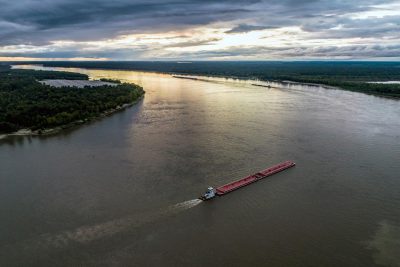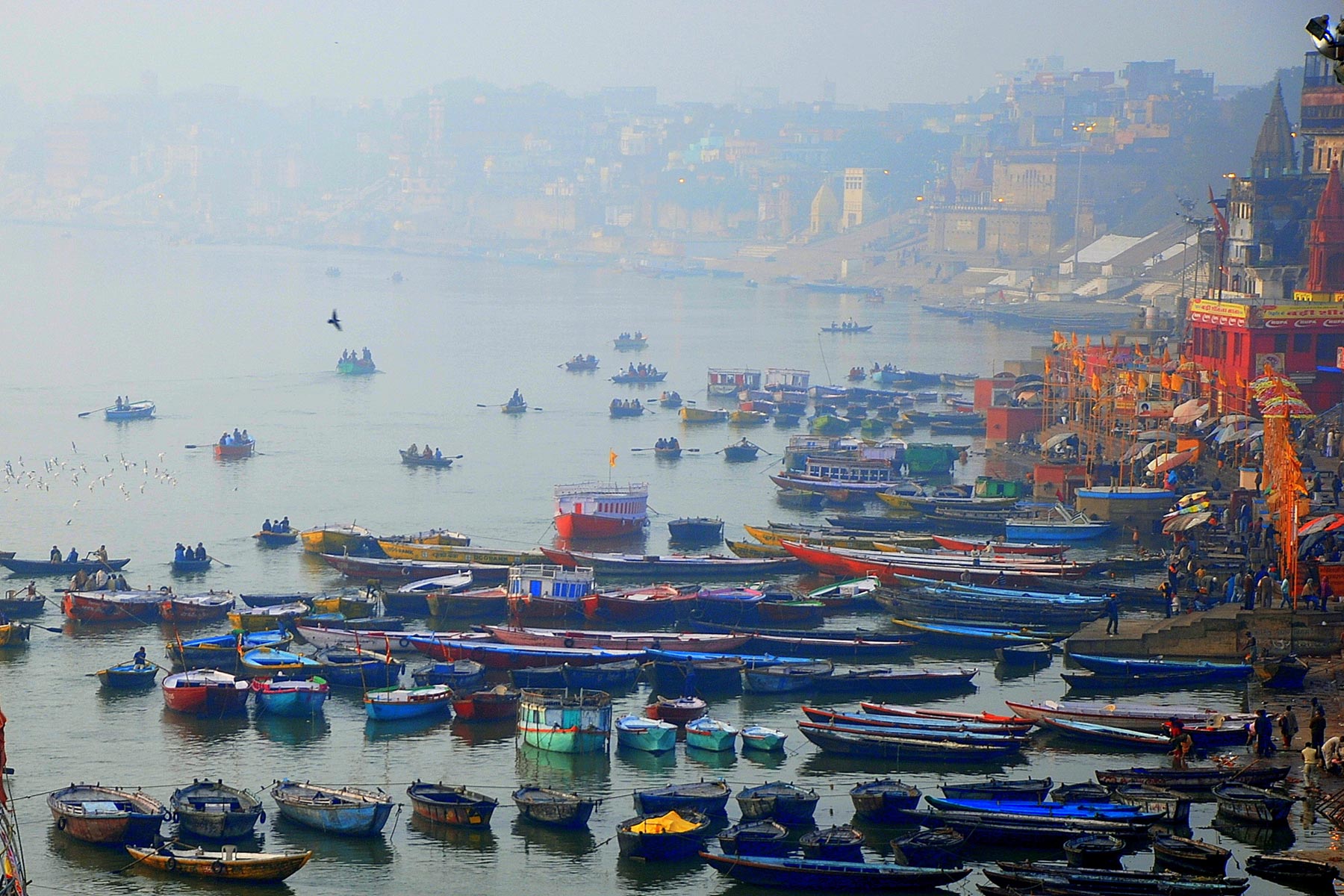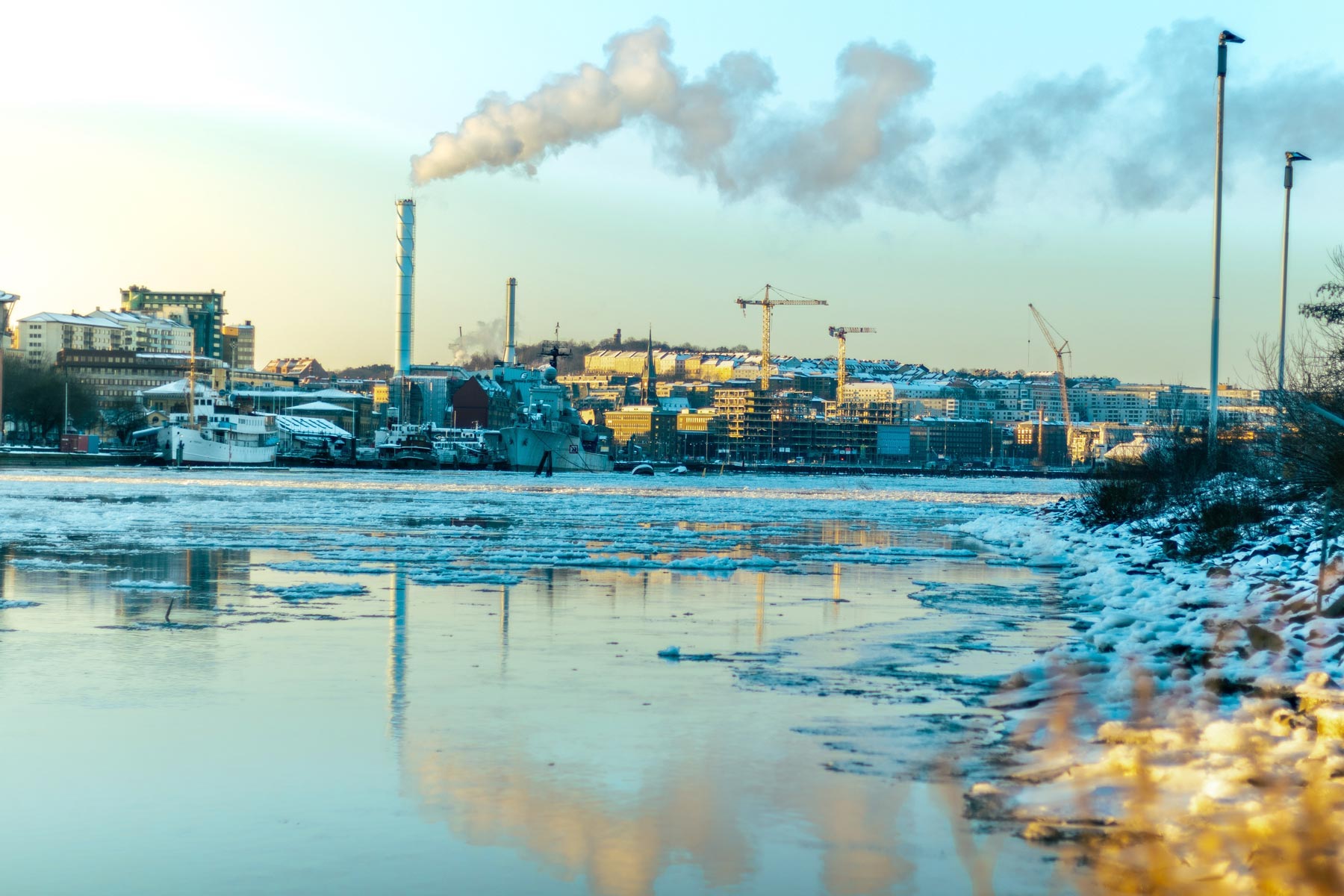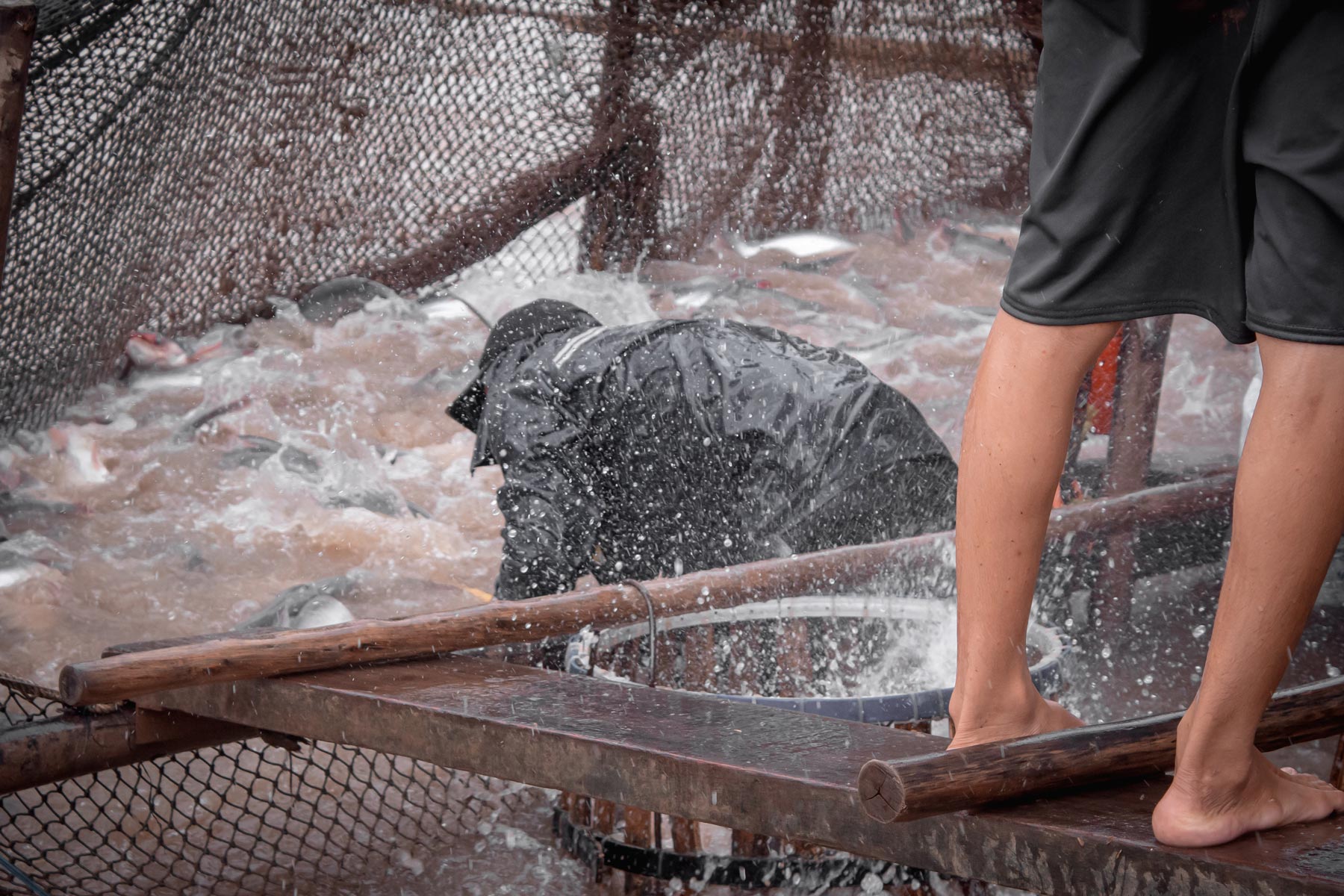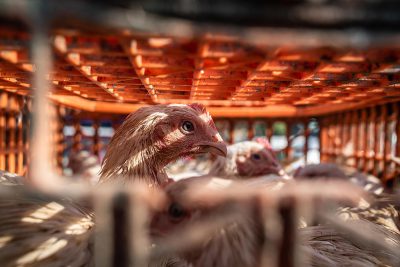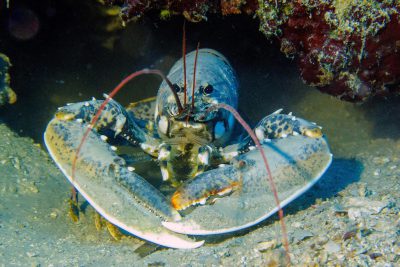Our planet’s rivers are more polluted than ever. Due to industries like animal agriculture, fast fashion, fossil fuels, chemical plants and more, continually polluting their local waterways, events like mass fish deaths and harmful algal blooms are commonplace. Human health is also at risk, with those living near polluted waterways experiencing higher risks of skin conditions, lung conditions, cancerous tumors and more.
We can all do our bit to turn the health of these rivers around by changing the way we consume, and calling on governments to clean up rivers and properly restrict the dumping of industrial waste.
What Are the 10 Most Polluted Rivers in the World?
1. Ganges River
Over 650 million people and a huge diversity of wildlife rely on the Ganges river to survive. But the Ganges faces major challenges, largely due to the rapid growth of agriculture, overfishing, and the waste from large cities near its banks. Wildlife populations in the Ganges have declined rapidly in recent years due to toxic pollution and overfishing. The number of Ganges river dolphins, a beautiful and unique species, has been driven down from tens of thousands to only around 1,500.
2. Citarum River
Indonesia’s Citarum river is one of the most polluted rivers in the world. Lead levels in the Citarum are 1,000 times the US Environmental Protection Agency (EPA) drinking water standard and the content of other heavy metals such as iron, aluminum, and manganese is above the international average. Fecal bacteria are also more than 5,000 times the mandatory limit according to the Asian Development Bank.
The nine million people who live in close contact with the river suffer from a long list of health issues because of this but have no other option but to rely on the river to survive. This dangerous pollution is mostly down to the more than 2,000 textile factories that line the riverbank, as well as poor waste management. These factories discharge massive amounts of chemical waste directly into the river and many have been previously linked to global fast fashion brands like H&M and Zara.
We can help reduce the amount of chemicals entering the Citarum and other rivers by avoiding fast fashion brands and getting our clothing second hand or from sustainable suppliers.
3. Yellow River
One third of China’s Yellow River was once declared unfit for drinking or agriculture. Things have changed somewhat since then, but pollution remains a huge problem. It’s a familiar story—industry and manufacturing are responsible for 70 percent of the polluting discharge that enters the river. The Yellow River supplies water to millions of people in northern China, but the pollution levels must come down if it is to stay that way.
4. Sarno River
The Sarno, located in Southern Italy, is the most polluted river in Europe. Pollutants, including dangerous heavy metals, flow into the river basin in untreated flows of waste water from agricultural and industrial sources. Bathing in the sea around the river mouth continues to be impossible due to the high concentrations of heavy metals.
5. Buriganga River
The Buriganga river flows past Dhaka, the capital of Bangladesh, and is now considered one of the most polluted waterways in the world due to continuous dumping of industrial and human waste. Experts say the river is now essentially biologically dead, with zero aquatic life whatsoever. The biggest polluter is the leather tanning industry, whoes chemically intensive processes are responsible for the majority of the untreated waste entering the Buriganga. We can stop supporting these polluting industries by avoiding leather products altogether.
6. Marilao River
The Marilao river in the Philippines is another river considered to be ‘biologically dead’, due to the huge amounts of agricultural pollution that flows into its waters every day. Chicken farming and processing plants are the main cause of the devastating pollution and these shocking photos show the extent of the damage these industries cause.
The Philippines exports huge amounts of chicken meat around the world, so we can help reduce the amount of pollution entering the Marilao, by choosing not to consume these products!
7. Mississippi River
The Mississippi river’s water quality has suffered greatly over the years due to pollution from animal waste, sewage, sawdust, and oil. Much of the pollution from these industries is now more under control, but animal waste remains an issue. Nitrogen and phosphorus from animal waste and fertilizer runoff from the many hog and poultry farms in the river’s catchment area, continue to pollute the Mississippi. These chemicals can leach into drinking water supplies and are toxic to plants and wildlife in high quantities.
8. Jordan River
The Jordan river is famous for its religious relevance and hundreds of thousands of people a year visit the river to be baptized. But many now consider the water unsafe for submersion due to high levels of pollution from raw sewage, agricultural runoff such as fertilizers and pesticides, and hormone-enriched waste water from fish farms.
Access is now being restricted as the water quality is a threat to public health.
9. Matanza-riachuelo River
Around 15,000 different factories (mostly leather tanneries and meat-packing plants) are situated in the basin of the Matanza river in Argentina, and their discharge is the main reason for the river’s high pollution levels. Around 60 percent of the people who live in the river basin, live on land that is considered unsuitable for human habitation and higher rates of cancer, respiratory illness, and diarrheal diseases have been reported in these areas.
Improvements are being seen in the Matanza basin due to ambitious clean-up programs, but these programs cost billions of dollars and take years. As long as polluting industries like animal agriculture exist, pollution will continue to be an issue.
The best thing we can do to help, is to avoid supporting these industries in the first place and move away from animal products.
10. Yamuna River
The Yamuna is a crucial source of water for around 57 million people in the Delhi region of India and is a site of religious significance for many, who will submerge themselves in the river daily. Yet it is one of the most polluted waterways in the world due to untreated domestic water pollution from Delhi’s millions of residents, as well as industrial pollution. Shocking test results show that the Yamuna contains a concentration of 1 billion fecal bacteria per 100 milliliters, which surpasses the acceptable standard for bathing of 500 bacteria per 100 milliliters.
During the 2020 COVID-19 lockdown, when Delhi’s industrial activity halted, many residents reported a cleaner river that seemed to have ‘regained its sparkle,’ showing that the river is not polluted beyond repair.
What Are the 5 Most Polluted Rivers in the U.S?
1. Calcasieu River
The Calcasieu river has suffered pollution and oil spills from chemical companies for many years. In recent times, swimming spots have been closed due to safety concerns and residents have been advised not to enter or even touch the river water due to public health concerns.
Only recently has any company been held to account, after a long investigation by the EPA found five major chemical companies guilty of illegal pollution. These companies are being ordered to pay $5.5 million dollars in settlements and an undisclosed amount to assist the clean-up of the river.
2. Ohio River
The Ohio river flows through six states and provides water for around three million people. It is estimated that around 7000 waste water pipes containing toxic metals feed into the river. Industrial steel plants that line the Ohio river are responsible for the high pollution levels, mostly in the form of nitrates, phosphates, and mercury, which starve the water of oxygen, causing fish deaths and algal blooms.
3. Cuyahoga River
The Cuyahoga used to be home to various species of fish, mussels, and shrimp, but intense industrial manufacturing in the city of Cleveland, combined with poor regulations has led to high pollution levels and massive losses to wildlife. The content of flammable chemicals in the river has been so high in the past, that it has even been known to catch fire.
Restoration projects and the slowing down of Cleveland’s industrial growth, have made some progress in improving the water quality, but there is a long way to go.
4. Holston River
Pollution in the Holston river differs from many others in the US, as its main pollutant is RDX, a highly toxic chemical used by the army to make explosives. For years, the Holston Army Ammunition Plant (HAAP) has been discharging RDX into the Holston river, and continues to break the legal limits set by the EPA. RDX, a possible human carcinogen, has been found in drinking water samples at double the EPA’s legal limit, putting thousands of Tennessee residents at risk.
The HAAP has since signed a consent decree that should reduce the levels of RDX being leaked into the Holston river, but there is a long way to go to ensure clean, safe drinking water for the people and animals who rely on this waterway.
5. Harpeth River
The Harpeth river is on the Tennessee list of impaired waterways because it doesn’t meet the water quality standards required for recreation and for healthy aquatic life. This is because of its low oxygen content and high phosphorus pollution, largely due to discharge from the local Franklin sewer plant. As a result, excessive growth of ‘blue algae’ threatens to dramatically reduce aquatic life and increase levels of highly toxic bacteria, potentially rendering the river biologically dead.
The Harpeth has been considered unfit for recreation and healthy biodiversity for over 15 years, yet very little progress has been made to clean up the river.
How Are Rivers Being Polluted?
Human industrial activity is the dominant cause of global river pollution. Various industries are responsible, but agriculture remains among the most harmful. Factory farming crowds thousands of animals together and the resultant waste leads to harmful toxins polluting our rivers. Production of cheap textiles and leather, as well as chemical processing, also causes devastating water pollution across the planet.
Human waste from cities, particularly in places with poor waste management, also plays a major role, but so often this is due to people having poor infrastructure available to them, which means they have no other choice of where to dispose of waste. It is up to governments across the world to ensure people have adequate ways of disposing of waste to avoid this kind of water pollution.
How To Prevent River Pollution?
Ending our consumption of animal products is one step we can all take to preventing river pollution. By decreasing demand for animal products, factory farms would be forced to stop crowding animals by their thousands and therefore reduce the resultant waste leaking into our waterways. We can also avoid fast fashion products that contribute to devastating water pollution and add our voices to campaigns against industrial pollution in our local area.
Conclusion
Many of the world’s rivers are close to being polluted beyond repair. Even stopping all water pollution now would still only reverse some of the damage we have done to natural habitats and drinking water supplies.
Now is the time for us to make the individual changes to our lifestyle, to make the biggest difference we can. By giving up animal products, avoiding fast fashion, donating to organizations fighting to clean up rivers and using our votes and voices to campaign against pollution in our local area, we can make a difference.
